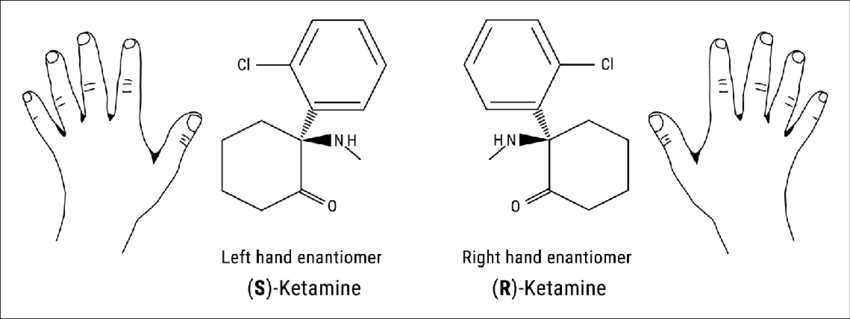In the quest for better antidepressants, researchers have turned their attention to ketamine, a drug initially recognized for its rapid mood lifting abilities. Studies supporting its effectiveness have sparked excitement, especially due to its ability to help even those who don't respond to traditional antidepressants. But understanding how it works isn’t necessarily straight forward.
.jpeg)
Think of ketamine as a multitasker—able to boost certain brain signals and release a growth factor called BDNF. Science suggest it achieves this by blocking an ion channel found in the brain called the NMDA receptor. However, it's not a simple story, as other drugs that block the NMDA receptor don't have the same antidepressant effects. The challenge lies in finding the right dose; too much or too little, and the effect disappears.

The terms "R" and "S" refer to the two different forms, or enantiomers, of a molecule. In the case of racemic IV ketamine, it exists as a mixture of R-ketamine and S-ketamine. These enantiomers are mirror images of each other, and their unique properties contribute to the overall effects of ketamine.
The significance of having both R and S forms becomes evident when considering the therapeutic potential of ketamine. While esketamine (S-ketamine) is the active ingredient in the nasal spray Spravato, racemic ketamine, which includes both R and S forms, has shown distinct advantages. Studies suggest that R-ketamine may contribute additional antidepressant mechanisms, possibly enhancing the effects of S-ketamine.
This combination appears to offer a more comprehensive and potent response compared to the use of the S form alone. The interplay between R and S enantiomers in racemic ketamine may provide a nuanced and effective approach to treating depression, showcasing the importance of considering both forms in the development of antidepressant medications.
Studies have shown stronger and longer-lasting antidepressant effects with R-ketamine compared to its counterpart. Oddly enough, it doesn't bind as tightly to the brain's NMDA receptors, yet it seems to be good at calming inflammation in the brain—a key factor in its long-lasting effects.
There's also the possibility that R-ketamine's magic lies in interacting with other brain systems, like the ones triggered by opioid receptors or other ketamine components. Researchers suspect a specific receptor, called the σ1 receptor, is responsible for R-ketamine's antidepressant effects. It acts like a switch, turning on a pathway that restores the brain's balance.
Our brain has special cells, microglia, that play a role in mood regulation. S-ketamine seems to interact with them by activating opioid receptors, while R-ketamine takes a different route by stimulating the σ1 receptor as mentioned previously. Both pathways converge on a common point in these cells, affecting mood-regulating molecules.
While we're still unlocking the full potential of ketamine, it holds promise for the treatment of mental health issues. The combination of S-ketamine and R-ketamine might give us a stronger effect against depression. And the intriguing part? R-ketamine might hold the key to preventing suicidal thoughts, which is a unique aspect compared to its counterpart.
In the end, the story of ketamine and its antidepressant potential is like peeling layers of an onion—each discovery brings us closer to understanding how it works and, more importantly, how it can offer hope to those struggling with depression.
Disclaimer: All content on this website, including (but not limited to) this statement, news, blog post, article, testimonial, or FAQ is not medical advice and should not be considered as such. This website cannot diagnose or treat any medical condition. Only a licensed medical professional who is familiar with you and your medical history can do that. Therefore, we cannot be responsible or liable for any actions taken by those who access our website or rely on its content. Please refer to the Terms & Conditions for more information.